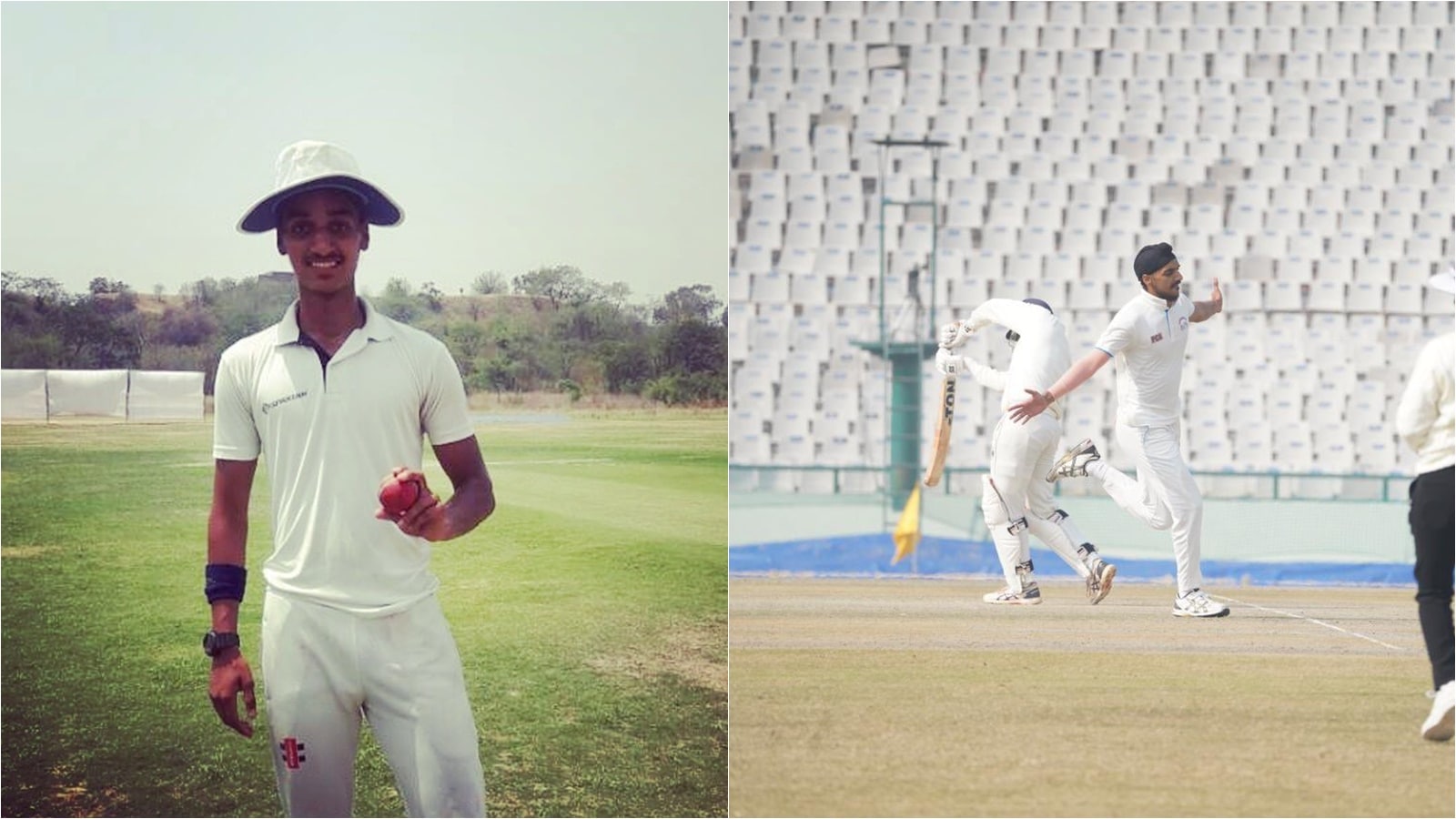When Arshdeep Singh broke into the Indian Test squad, his father Darshan Singh Aulakh reminisced about the hours his son spent watching videos of former left-arm pacer Irfan Pathan as a youngster and getting inspired to represent the country in the longest format.
Aulakh, formerly with the Central Industrial Security Force, and wife Baljit Kaur received the good news ahead of their son taking the field for Punjab Kings in the IPL game against Delhi Capitals in Jaipur.
“Arshdeep would watch videos of Irfan Pathan repeatedly and would often tell me that he would also play for India in whites one day. Like every cricketer, earning a Test cap and to doing well in Tests remains Arshdeep’s biggest dream,” Aulakh told The Indian Express.
“Playing Test cricket is the real Test for every bowler. We have seen him in coloured jerseys and now seeing him in whites will be memorable for us.”
Post his T20I debut for India in 2022, Arshdeep, now 26, has become India’s leading wicket-taker in T20Is with 99 scalps in 63 games. But he has played only 12 matches for Punjab at the first-class level with 39 wickets at an average of 12.

 Arshdeep Singh when he signed for Kent. (Kent County)
Arshdeep Singh when he signed for Kent. (Kent County)
With T20 games being the most frequent format he has played, getting in rhythm for long-form cricket has been a challenge in recent times. Coach Jaswant Rai recalls the time when a young Arshdeep would travel across Punjab to play in state U-16 and U-19 multi-day matches.
“Whenever he used to play these games, he would tell me that he will play Test matches for India one day. But then with IPL and his T20I selection, first-class appearances became less frequent,” Rai said.
Story continues below this ad
In 2023, after a 17-wicket IPL season, the left-arm pacer signed for English county Kent and played five first-class matches picking up 13 wickets at an average of 41.76 with his best figures of 3 for 58.
“All his IPL heroics and some early success in T20Is made people consider him a T20 specialist. But it was not the case with Arshdeep. He always had the desire and that was the reason he opted to play for Kent and I would call him almost daily to remind that,” recalls Rai.
Limited time
But it wasn’t easy. Post the county stint, T20Is would again take most of his playing time, including his 17-wicket contribution in India’s title triumph at the World Cup in the USA and West Indies.
Rai would have to train his ward’s mind and body for the multi-day format to keep his Test dream on track. “When a player achieves so much success in one format, it sometimes can build muscle and mind memory for him. Bowling variations like yorkers, slower ball and bouncers in one over are imbibed in him like a robot. But we had to re-learn and reboot his mind and body. So I made him bowl 6-8-10 overs of length balls and made a spot with a marker for him to aim at consistently,” the coach said.
Story continues below this ad
“Once we achieved that and the body and mind was set, we would spend time on making the new ball swing and hitting back of a length with the old ball. He would bowl 8-10 overs daily at the same length whenever he has got time in the last one and a half years, to train his mind.”
Last year, Arshdeep took 20 wickets for Punjab in the Vijay Hazare Trophy and it was his five-wicket haul against Mumbai in which he picked up the wickets of Shreyas Iyer, Shivam Dube and Suryakumar Yadav that led Rai to believe that his ward was making progress in red-ball cricket too. Arshdeep would carry Dukes and Kookaburra balls in his kit bag and practise with them whenever he got a chance.
“We would discuss how the Dukes seam works and how it stays harder for longer than the Kookaburra,” recalls Rai.
With Arshdeep having played in English conditions in 2023, Rai believes the left-arm angle would work in his favour.
Story continues below this ad
“The length has to be 5-5.5m and he has to swing the ball in the air and also stick to a line and length for a longer period,” he says.

